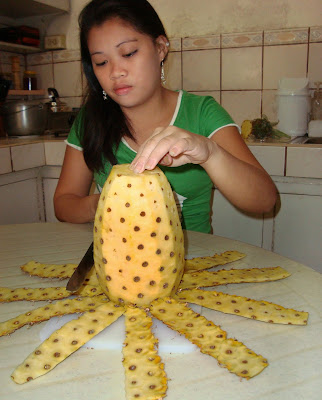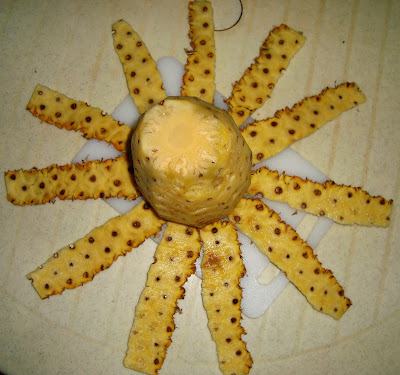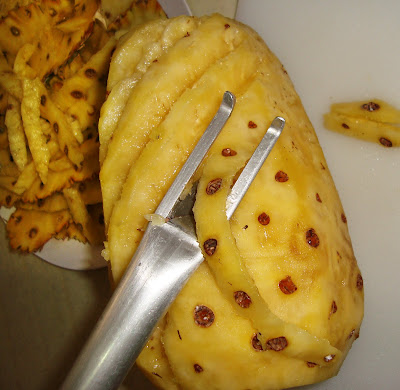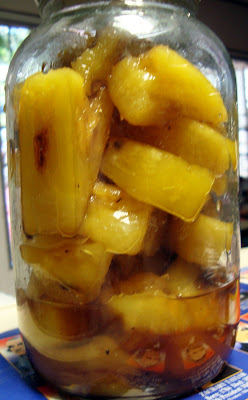Dr Abe V Rotor
Dr Abe V Rotor School on Blog
Paaralang Bayan sa Himpapawid, with Ms Melly C Tenorio
738 DZRB AM 8 to 9 evening class, Monday to Friday
Bromeliads are found as epiphytes in rainforests and succulents in arid wastelands. Such diverse adaptation is traced to the plant's special structures to store water not only for its own use, but other organisms as well. Bromeliads store water in their thick leaves and in a pool formed by their tightly-overlapping leaf bases. So efficient is the plants' ability to collect water from rain, dew and capillarity that the pool has become the abode of insects, frogs and even fish, thus creating a unique ecosystem.
The key is symbiosis. The tenants convert organic matter into plant food and protects the bromeliad. The plant in return gives them home but makes the environment ideal for their population. Through thousands of years of co-evolution, symbiosis grew into a unique ecosystem. Such scene found in a tropical rainforest creates the impression of "an ecosystem within an ecosystem. "
Bromeliads have become fancy to gardeners who domesticate and breed them mainly for their beautiful inflorescence. While we cannot copy the unique ecosystem of Bromeliads in the wild, we have succeeded in taming the bromeliads in making our environment beautiful and gracing our dining table with a beautiful and delicious fruit - the pineapple. ~
Dressing fresh piña fruitDon't settle for piña in can. Get the fresh fruit instead and do the preparations yourself. It is actually fun with the family. There is no substitute to fresh fruits. And you can make preserves, too. And superb natural vinegar. You can even plant the top in your garden and raise a hill or two of this most popular tropical fruit - the only edible member of the Bromeliad family.
Choose the best piña available in your local market, or direct from the farm, and follow the procedure shown in these photographs.
![]() Peeling the fruit after its has been washed, its top and
Peeling the fruit after its has been washed, its top and
bottom trimmed. It takes some practice to do it well.
![]() Artistic touch in skinning piña fruit. Can you assocaite
Artistic touch in skinning piña fruit. Can you assocaite
it with an occasion, a queer creature - or simply a decor?
![]() Piña eye remover makes work easy and clean.
Piña eye remover makes work easy and clean.![]()
![]() Piña preserve is a lucrative cottage industry.
Piña preserve is a lucrative cottage industry.
You can also make piña jam, glaze and jelly. Why
not try dessicated piña, and powdered piña ?
![]()
Were you able to follow the above procedure? Tell us more about this favorite fruit to enrich this article. Our viewers will be very grateful indeed. ~
Dr Abe V Rotor School on Blog
Paaralang Bayan sa Himpapawid, with Ms Melly C Tenorio
738 DZRB AM 8 to 9 evening class, Monday to Friday
Pineapple is the only edible member of Bromeliaceae, a
family of monocot flowering plants of around 3,170 species
native mainly to the tropical Americas. The pineapple is
one of the world's most popular fruits that ranks with
banana, mango and apple. ~
family of monocot flowering plants of around 3,170 species
native mainly to the tropical Americas. The pineapple is
one of the world's most popular fruits that ranks with
banana, mango and apple. ~
Eons of time has lapsed in your wild domain,
Bless you singular of your kind;
Released from your ancient gene pool and vane,
Tamed and loved by all mankind.
Bless you singular of your kind;
Released from your ancient gene pool and vane,
Tamed and loved by all mankind.
Bromeliads are found as epiphytes in rainforests and succulents in arid wastelands. Such diverse adaptation is traced to the plant's special structures to store water not only for its own use, but other organisms as well. Bromeliads store water in their thick leaves and in a pool formed by their tightly-overlapping leaf bases. So efficient is the plants' ability to collect water from rain, dew and capillarity that the pool has become the abode of insects, frogs and even fish, thus creating a unique ecosystem.
The key is symbiosis. The tenants convert organic matter into plant food and protects the bromeliad. The plant in return gives them home but makes the environment ideal for their population. Through thousands of years of co-evolution, symbiosis grew into a unique ecosystem. Such scene found in a tropical rainforest creates the impression of "an ecosystem within an ecosystem. "
Bromeliads have become fancy to gardeners who domesticate and breed them mainly for their beautiful inflorescence. While we cannot copy the unique ecosystem of Bromeliads in the wild, we have succeeded in taming the bromeliads in making our environment beautiful and gracing our dining table with a beautiful and delicious fruit - the pineapple. ~
Dressing fresh piña fruitDon't settle for piña in can. Get the fresh fruit instead and do the preparations yourself. It is actually fun with the family. There is no substitute to fresh fruits. And you can make preserves, too. And superb natural vinegar. You can even plant the top in your garden and raise a hill or two of this most popular tropical fruit - the only edible member of the Bromeliad family.
Choose the best piña available in your local market, or direct from the farm, and follow the procedure shown in these photographs.
 Peeling the fruit after its has been washed, its top and
Peeling the fruit after its has been washed, its top andbottom trimmed. It takes some practice to do it well.
 Artistic touch in skinning piña fruit. Can you assocaite
Artistic touch in skinning piña fruit. Can you assocaiteit with an occasion, a queer creature - or simply a decor?
 Piña eye remover makes work easy and clean.
Piña eye remover makes work easy and clean.Note spiral orientation. It's a local invention made
of alumium tube.
of alumium tube.

Cut in radial symmetry and serve
![]() The fruit is sliced lengthwise and cut into chunks.
The fruit is sliced lengthwise and cut into chunks.
Or it may be served directly on the table - sliced
crosswwise, too
![]() Piña chunks cooked with cane syrup as natural
Piña chunks cooked with cane syrup as natural
preservative. Note: Black-eye is a result of over
maturity in the field, or effect of drought. The
best fruit is usually served fresh - no blemishes.
 The fruit is sliced lengthwise and cut into chunks.
The fruit is sliced lengthwise and cut into chunks.Or it may be served directly on the table - sliced
crosswwise, too
 Piña chunks cooked with cane syrup as natural
Piña chunks cooked with cane syrup as naturalpreservative. Note: Black-eye is a result of over
maturity in the field, or effect of drought. The
best fruit is usually served fresh - no blemishes.
 Piña preserve is a lucrative cottage industry.
Piña preserve is a lucrative cottage industry.You can also make piña jam, glaze and jelly. Why
not try dessicated piña, and powdered piña ?

Were you able to follow the above procedure? Tell us more about this favorite fruit to enrich this article. Our viewers will be very grateful indeed. ~


